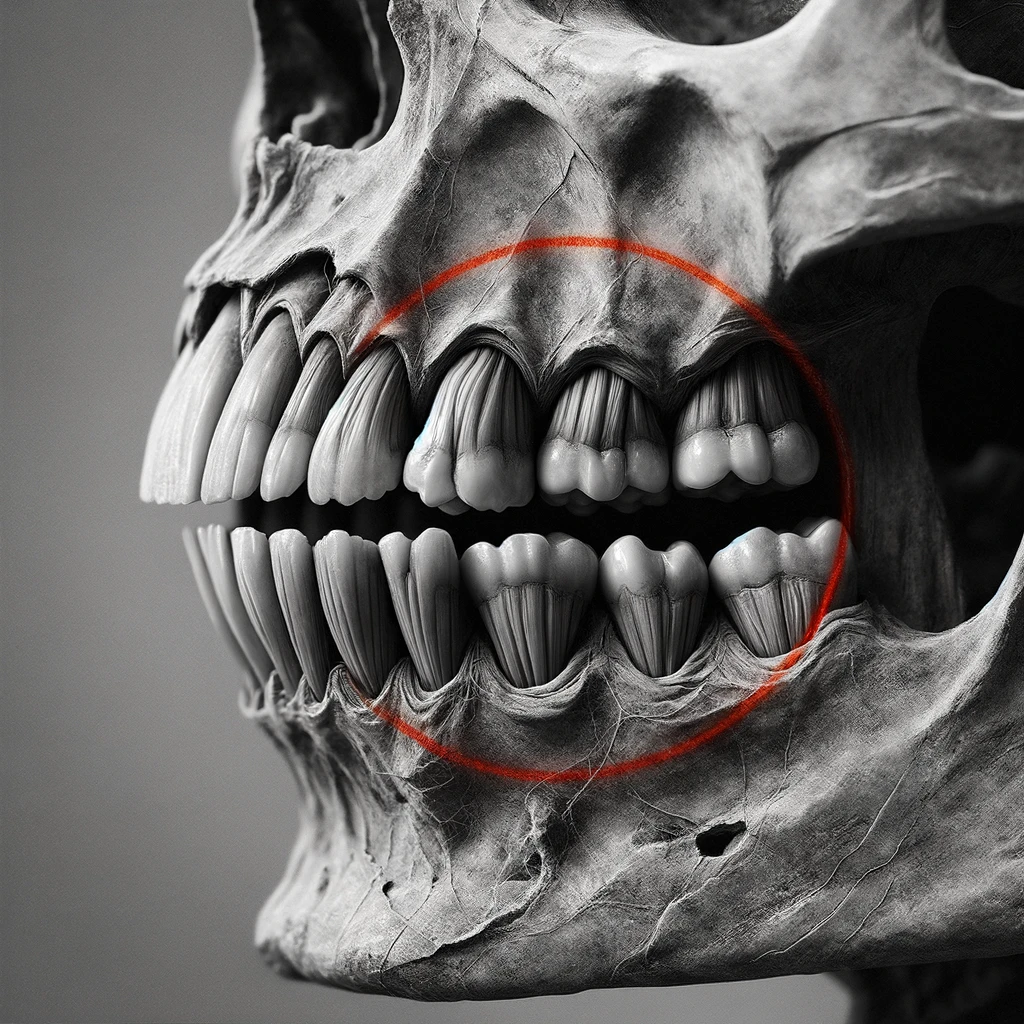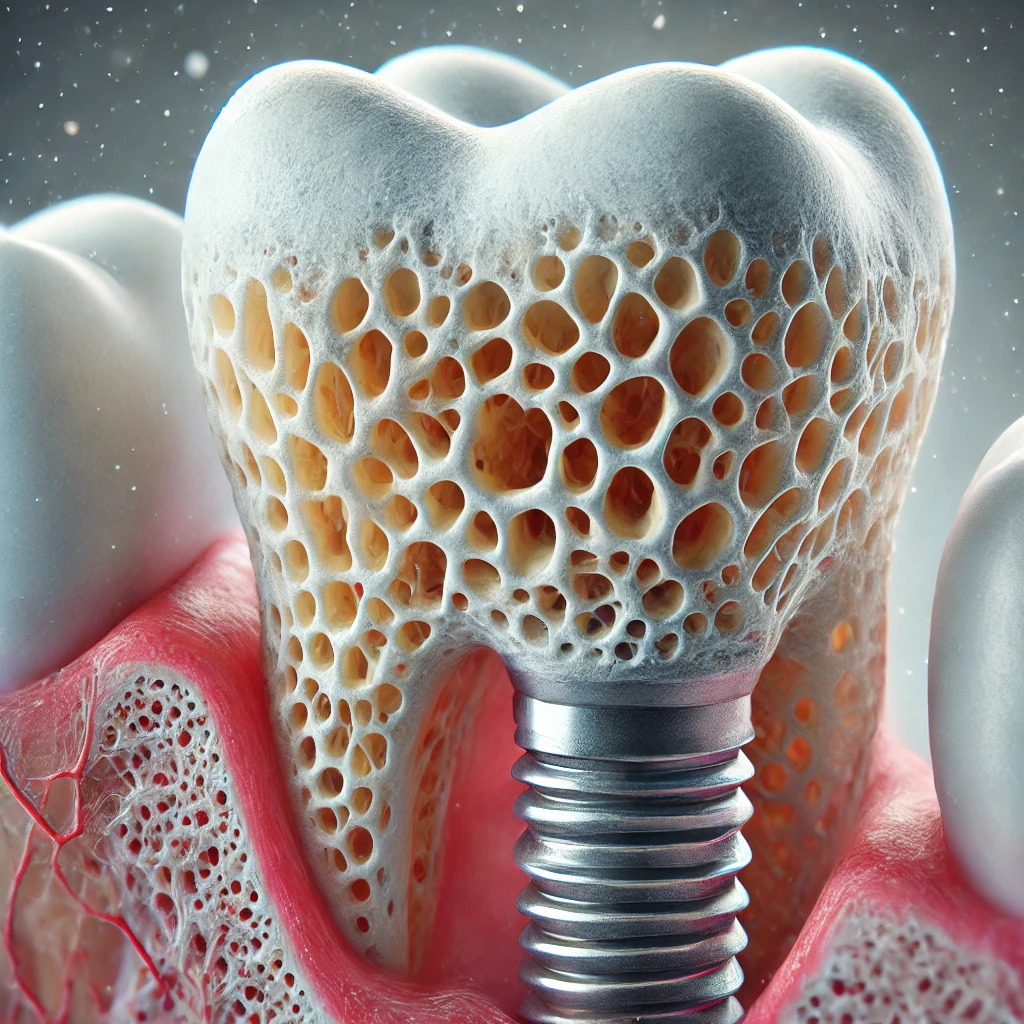The artificial teeth found in ancient Egyptian mummies were made of shells and ivory, and could be considered the origin of modern dental implants. In 1952, Swedish physiologist Prof. Branemark discovered the phenomenon of osseointegration, in which titanium bonds with bone, which became the basis for modern implant technology. Implants are made of titanium alloy and provide similar functions to natural teeth.

The photo above shows the mouth of an ancient Egyptian mummy from around 2000 BC. Notice that there’s something unusual between his teeth. What is it? They’re artificial teeth. The ancient Egyptians used shells or ivory to replace missing teeth! The human endeavor to replace missing teeth has been going on for a very long time. The 19th century saw the development of gold prosthetics, the early 20th century saw attempts to create dental implants, and the 1980s saw the introduction of the first technology that resembles today’s dental implants.
What is a dental implant? Medically, the definition of an implant is “the implantation of an artificial object in vivo to replace missing body tissue.” Implants can be used in a variety of body parts. For example, you might have a skin implant, or you might have an ear implant. One type of implant in particular is called a dental implant, which is placed in the teeth. As you can see in the photo above, a dental implant is a metal screw-like material that is implanted into the area where the root of the tooth should be, and then a material called a “crown” is placed on top of the screw, which is shaped like the top of the tooth. Before the development of modern dental implants, dentists faced a major challenge. Older implants did not function well as teeth because they were not functionally connected to the gums, which prevented them from exchanging forces with each other. Therefore, it was necessary for the material to be “structurally and functionally bonded” to the gums.

In 1952, Swedish physiologist Prof. Branemark was observing the wound healing process in the shin bone of rabbits under a microscope. To his surprise, he found that the titanium he placed in the wound completely fused with the bone tissue. Branemark called this phenomenon ‘osseointegration’. This process of osseointegration was soon adapted by dentists and applied to the development of modern dental implants. But how does osseointegration work in the dental implant placement process, and why is titanium the material used for osseointegration?
Think back to your school days. At the beginning of a new school year, how is the atmosphere in the classroom? Students who were in the same class the previous year tend to cluster together, and the whole class is not well integrated. However, as time goes on, by the end of the semester, everyone in the class gets along with everyone else, regardless of what they were in the previous year. The osseointegration process is similar. When titanium is first inserted into the gum, the material is separated from the tissue because it hasn’t yet bonded with the bone. After the titanium is inserted and waited for, some very interesting changes take place in the body. First, bone tissue begins to attach to the titanium and grow. Then, blood vessels and other body tissues join with the titanium and become stronger. Why?
When a dental implant is placed, the gum is drilled with a dental drill, and the blood from the drilling solidifies in the gum to form a hematoma, which contains platelets. It’s the same thing that happens when you fall down while running and get a scab on your skin. The ‘growth factors’ released by the platelets in the hematoma stimulate the activity of bone tissue. The growth factors stimulate the surrounding undifferentiated cells that haven”t yet differentiated into bone tissue to do so. They also stimulate other types of cells to absorb the damaged bone tissue. The growth factors also cause new blood vessels to grow, and the hematoma is gradually replaced by new blood vessels.
So, why use titanium as a material for osseointegration? The answer is simple: it”s the most “biocompatible” material. Titanium is considered biocompatible because it does not rust, has been shown to be non-toxic in the human body, and has good corrosion resistance. Corrosion resistance means that it does not corrode easily. The exact name of the material currently used in dental implants is titanium-aluminum-vanadium alloy (Ti-6Al-4V). An electron microscopic examination of the surface of this alloy reveals why this material is so good at osseointegration. The surface of the alloy has many pores that allow bone to grow and blood vessels to grow into the pores. That’s why the implant and gum are able to bond so firmly.
This process of osseointegration is similar to that of natural teeth, which means that implants are not permanent and require constant care. The old Seoul City Hall building must have been a very beautiful and solid building when it was built. However, it is now so old that the new Seoul City Hall building is being used. The same goes for dental implants and natural teeth. If you take good care of your dental implants, they can last for 30 years or more. However, if you don’t take good care of them, they can develop problems, such as inflammation around the implant, and you’ll have to replace them. Many people think that since dental implants are artificial, they don’t need to be taken care of, but this is not the case.
Today, dental implant technology is so advanced that it’s hard to tell with the naked eye whether a person has a dental implant or a natural tooth. As a result, dental implants have become a popular dental appliance, with more than 500,000 implant procedures performed in South Korea alone. Dental implants have many different uses. They’re often used to make dentures stronger and more beautiful, and they’re also a popular tool for facial reconstruction. Dental implant technology is the most natural-looking of all dental prosthetic technologies developed to date, although it lacks the “muscle that connects the tooth to the gum” that natural teeth have.
 I’m a blog writer. I want to write articles that touch people’s hearts. I love Coca-Cola, coffee, reading and traveling. I hope you find happiness through my writing.
I’m a blog writer. I want to write articles that touch people’s hearts. I love Coca-Cola, coffee, reading and traveling. I hope you find happiness through my writing.